We’ve all been beginners. We know how scary or exhilarating it can be. We understand that there is an end goal we’re aiming for but there are so many intangibles we don’t yet know. But we also know that in order to get where we want to go, we have to be willing to take that risk and leap of faith into the unknown.
Entering the gym to start your fitness and health journey is no different.
I can vividly recall making the decision that, “I’m going to get myself healthy!” and walking into the gym with confidence that “today is the day” only to be stopped dead in my tracks by the sounds of machines and weights and people doing these crazy exercises that I had no idea how to do.
I realized very quickly that I had no idea what I was doing or where to even start! I had gotten excited to take the leap, but hadn’t planned anything out in order to try and execute! Now nearly 10 years later, I have heard and seen this same story play out in many others that get the gusto to level up, but end up like Deer in headlights with no idea where to even kickstart their journey. With that, I’d like to address a few of the things all beginners should know when starting their fitness journey!
- How often do I need to work out?
A very common question that people often get wrong. The gym and traditional working out is very important to building a stronger or better body but time off can be as, if not more, crucial as the time spent training. It is recommended that some sort of activity is done at least 5 days per week, but in the sense of resistance based training, you shouldn’t need to be in a gym setting more than 3 days per week. Resistance training is a method that breaks down the muscle tissue as it’s being worked and though it may seem like going every single day is the answer to reach your goals faster, that time off between training where the muscles get rest is where the repair, growth, and change comes from. Training muscles too often can lead to overuse and stress injuries that could extend how long it takes for you to reach your goals. My general recommendation to beginners is to aim for 3 days a week in the gym + 2-3 days of non-resistance based workouts (like cardio) on the off days.
- What kind of workouts should I do?
If you’re working out like the recommended 3 days per week as noted above, there are a couple of ways you can approach it. If you’re taking a day off between training sessions, I suggest each one should be a full body workout that targets muscles across the whole body – top to bottom; front to back. The day off between allows adequate time for recovery before hitting similar muscles again.
The other popular method is to break up the body into parts with a dedicated day of training to push muscles; pull muscles; and lower body muscles. This begins looking like a traditional bodybuilding training split as you’re dialing in your focus more on a specific set of muscles for that one session.
If you insist on extending to additional days of training – 4, 5, 6 days per week – my suggestion is that you continue to dial in your focus of each workout on specific muscle groups to avoid injuring areas that are in recovery or over training.
Regardless of how you approach your split, general goals of fat loss or muscle building alike should follow more compound exercises that incorporate more than 1 muscle group or joint action to perform (squat, bench, deadlift, etc). And if you’d like a little more specificity on which exercises can help get you off the ground, check out my FREE eBook of the 17 Exercises All Beginners Should Know, here.
Finally, it’s a misconception that the longer you’re in the gym, the better the workout session. A proper workout should not last more than 40-60 minutes (not including warm up/cool down). Less than that, the intensity should be dialed up; longer than that you may not get as much out of the workout due to too much rest, or overworking the body if doing too much.
Aside from that, find what works for you, your schedule, and is fun to do. Ultimately the best kind of workout is the one you like and will stick with.
- What are the best supplements?
Supplements are designed literally as additional boosts to help you reach your goals in a variety of ways. That being said, there are countless articles dedicated to this exact question, but ultimately, there are only 3 supplements I would suggest (if you were going to take any) that have proven results.
Caffeine – the stimulant provides focus and energy proven in testing.
Creatine – a friend to muscles which helps them build strong
Protein – the energy source that helps muscles recovery, repair, rebuild after training
Other than those, the supplement industry is a largely unregulated industry (in the US) and most products are filled with trash ingredients that don’t have proven ability to boost your performance and in some cases, can be dangerous. The amounts are rarely accurate, and anything with a “proprietary blend” (especially without information about what that blend is made of) should be avoided.
- How do I know it’s working?
At the outset of your fitness journey, I’m hoping you planned your goals of what it is you’re working toward. If you did this correctly, one of the aspects of your goal would be to identify how you’re going to measure success along the way. Luckily there are a plethora of methods which include:
-Body Fat measurements
-Circumference measurements
-Scale weight
-Progress pictures
-Clothing fit
-Energy/Stamina/Endurance levels
And the best one to go with is the one that works best for you and your goals and that you’ll be able to stick with accurately. For most people I highly recommend the progress pictures as it can often tell the best story with tangible evidence of where you were and where you are. But again, pick the best one that fits your goals and you can do consistently without issue.
- Consistency or Intensity?
As the last sentence of the last section alludes to, consistency is key. In learning anything new, consistently showing up, putting in time and energy to learn and build and grow will lead to the best results. The intensity will vary depending on what your training plan calls for and how your energy levels are feeling. But consistently showing up gives you the best chance for success. You may have a ton of energy today and crush an intense workout that hits you harder than expected, but if you show up to the next session in a couple of days, and you’re still sore/tired but put in some lower intensity work, that’s still forward progress that you wouldn’t have if you sat on the couch instead.
Consistency always over intensity.
- Why am I not as good as that other person?
One of the most common feelings beginners get is imposter syndrome and comparison syndrome. It is SOOO easy to see someone doing an exercise that you have planned and they’re doing it A) easier than you or B) with heavier weight than you, which throws you into thinking, “Why can’t I do it that easy?”
Nothing kills progress, motivation, consistency more than comparing yourself to the person doing the same thing next to you and them doing it better than you. Negative self talk of all kinds need to be left at the door, but if you can’t manage to get past this one, you’re gonna have a heck of a time. The best thing to remember is that this is NOT their Day 01. You are not them. They are on a completely different journey, reading the same book. The ONLY difference is, they are probably on page 50, while you’re just now cracking the spine. Everyone is built differently; Everyone has different starting points; Everyone has different adaptations;
Every. Person. Is. Different.
If you can kill the comparison, you’ll level up faster than you ever thought.
Beginners at the gym are great because they’ve decided to take control of their lives and start building a better future. Stepping foot on the gym floor can be intimidating and anxiety-inducing if you don’t have the right plan and mindset. If you follow along the advice laid here and put together a plan of exercises that that follow your goal, you can take over the world.
Ultimately the only thing you can do is take off your water wings and jump into the deep end and know that you’re going to float as long as you try.
If you’re still really nervous, remember to start slow with VERY light resistance to learn how your body moves and build from there. Showing up is half the battle, and hopefully this has helped win the other half. Now get to the gym and start kicking butts!
And if you’re still not sure on where to start, let’s connect and start clearing the fog right now! Apply for Online Coaching with me and let’s get to work today!
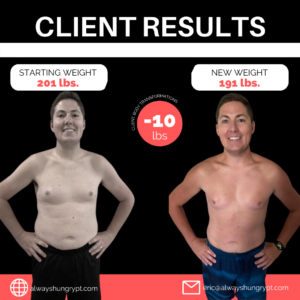

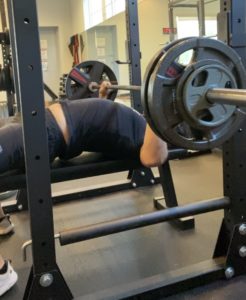
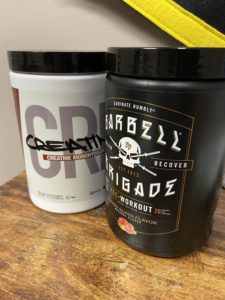
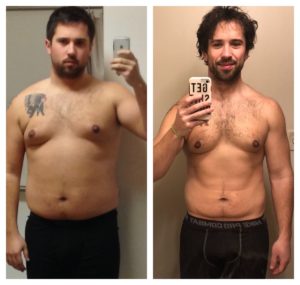
 Whatever “diet” you’re trying to follow will ultimately fail if you don’t keep that in mind. As much as people like to complain about “change”, it’s really when we dial in a habit that we thrive the most. Life is difficult. Many of these diets are strict and difficult – making them super easy to slide off of and back into our old habits.
Whatever “diet” you’re trying to follow will ultimately fail if you don’t keep that in mind. As much as people like to complain about “change”, it’s really when we dial in a habit that we thrive the most. Life is difficult. Many of these diets are strict and difficult – making them super easy to slide off of and back into our old habits.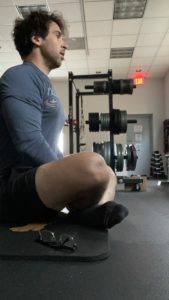
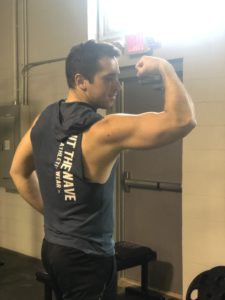 As someone who thought many of these lies in my earlier days of training, rest assured, I have gone through my own scientific method of trial and observation to confirm the truths that mirror these myths.
As someone who thought many of these lies in my earlier days of training, rest assured, I have gone through my own scientific method of trial and observation to confirm the truths that mirror these myths.